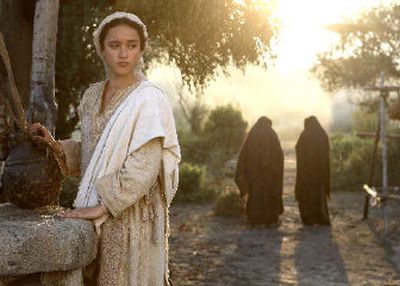Another look at Mary

Scot McKnight, a religious studies professor, was teaching a number of years ago when he had an “aha” moment.
McKnight had just read aloud the “Magnificat,” the Virgin Mary’s hymn of praise from the Gospel of Luke.
“What kind of woman would have said this?” he asked his students at North Park University in Chicago.
As he listened to their answers, McKnight, an evangelical Christian, became convinced of two things: One, most Protestants know next to nothing about Mary; and two, the popular conception of Mary as “hyper-pious, with her hands folded in prayer … like a nun,” has little to do with the “courageous, gutsy” young woman – “the real Mary” – of the Bible.
At that moment, McKnight vowed to “reclaim” Mary, a New Testament figure revered by Roman Catholics and largely overlooked by Protestants.
His new book, “The Real Mary: Why Evangelical Christians Can Embrace the Mother of Jesus” (Paraclete Press, 160 pages, $19.95) tries to do just that.
But McKnight isn’t the only Protestant taking another look at the mother of Jesus.
“The Nativity Story,” a movie that chronicles the lives of Mary and Joseph and the birth of Jesus, opens this weekend, and Protestants around the country are using the film to re-evaluate the role of Mary within Protestant tradition.
McKnight and his publisher have helped organize more than 60 Protestant groups around the country to host forums to discuss the movie and the book.
The goal, as he sees it, amounts to nothing short of a coup by the Protestant church.
“There are a few of us who are in a Trojan horse,” McKnight says. “It’s as if we’ve been released in the Vatican, and we’re swiping Mary and taking her back to the Protestant world.”
Even though “The Nativity Story” premiered at the Vatican, filmmakers hosted some 60 early screenings of the film for Protestant leaders to get their flocks energized about the movie.
“We’ve taken the film around to every big Protestant leader we can think of,” said Wyck Godfrey, one of the film’s producers. “We’ve gotten it to Rick (Warren), the (Pat) Robertson family, Focus on the Family, Mission America, Young Life, Campus Crusade.”
Godfrey, a Presbyterian, said the film tries to portray Mary as down-to-earth.
“The bent we took was very Protestant, really, treating (Mary) as a human, someone going through something very difficult, with real emotions,” he says. “We were not trying to create her as some iconic saint.”
As early as the second century, Christians honored Mary as the mother of God. But since the Protestant Reformation in the 16th century, she has been a point of contention between Catholics and Protestants.
On the one hand, Catholics have venerated Mary, portraying her in stained glass and statues, hailing her in their rosaries.
In 1854, Pope Pius IX raised Mary beyond mortal ranks, saying she had been born without original sin. In 1950, Pope Pius XII held Mary even higher, declaring that when she died, her body was taken into heaven and reunited with her soul.
Most Protestants rejected these papal decrees, known as the “Immaculate Conception” and “Assumption,” respectively. Protestants, for the most part, have been wary of focusing too much attention on Mary at the expense of Jesus.
So when David Hershey, a 26-year-old evangelical pastor at Pennsylvania State University, announced recently that he would be leading a Bible study session on Mary to coincide with the release of “The Nativity Story” and McKnight’s book, a student e-mailed back: “What are we, Catholic now?”
For some, that kind of negative reaction underscores why Protestants need to talk about Mary.
Tim Seitz-Brown, pastor of Paradise Lutheran Church in Thomasville, Pa., says Jesus’ mother is in need of an extreme makeover among Protestants.
In the classic Nativity scene, Seitz-Brown says, “Mary is beautiful and passive.” But as he sees it, “Mary would be much feistier.”
Tim Franklin, pastor at the evangelical Bridport Congregational Church in Vermont, said he hoped his sermons on Mary would build “a bridge to greater understanding” between the faiths.
Before reading McKnight’s book and watching “The Nativity Story” at Willow Creek megachurch outside Chicago, he never would have dedicated an entire sermon to Mary, Franklin said.
Now he’s planning four sermons on the Virgin.
“It’s a big step,” he says.